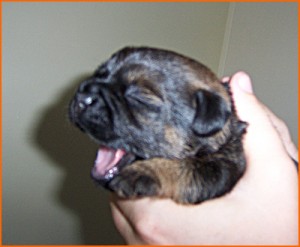Environmental Enrichment and Stress
Just read an absolutely fascinating study called “Enriched environment experience overcomes learning deficits and depressive-like behaviour induced by juvenile stress“, that Dr Sophia Yin made reference to recently on Facebook. It’s an absolutely fascinating read, especially after writing about the over-emphasis of socialisation just days ago. I almost have to eat my words… Almost…

Dogs yawn when they’re stressed – I don’t know if rats do, too, but this study used biochemistry to measure rat-stress.
Basics of the Study
This study used rats to investigate the role of stress on adult behaviour (particularly surrounding anxiety and depression). Two groups of rats were stress during their juvenile period (27-29 days) through ‘forced swimming’, elevation, and restraint. (A third group of rats was used as a control.) One group of the ‘stressed’ rats was given environmental enrichment, by enhancing their cage environments with toys, shapes, colours, and allowing them activities outside of their cage. The other groups did not receive environmental enrichment.
The Findings
In short: Environmental enrichment seemed to ‘neutralise’ the anxiety experienced by the stressed rats, and sometimes reduced their anxiety further than rats with no stressful incidents and no environmental enrichment.
In long: Continue reading


